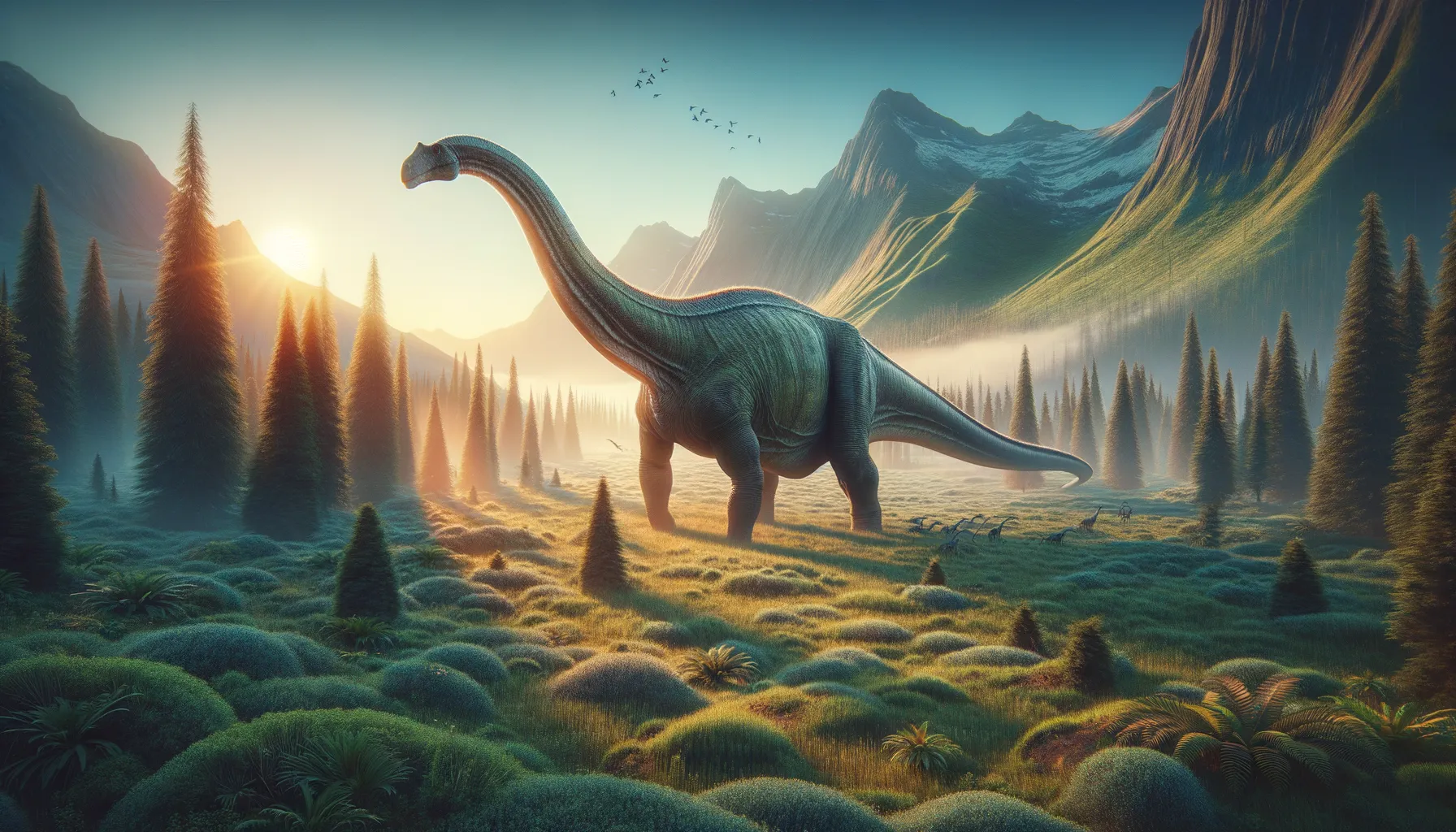
Tonganosaurus
A gentle giant of the Jurassic era.
Period
Jurassic
Length
Roughly 50 feet long.
Height
Approximately 20 feet tall.
Weight
Around 16 tonnes.
Tonganosaurus was a large sauropod dinosaur that roamed the Earth during the Jurassic period. Known for its distinct long neck and tail, it was among the giants of its time. Its herbivorous diet made it a peaceful grazer, likely travelling in herds to safeguard against predators. Tonganosaurus contributes significantly to our understanding of sauropod diversity and evolution.
Diet
Tonganosaurus primarily ate plants, using its long neck to reach high vegetation. It likely consumed a variety of ferns, cycads, and coniferous trees that were abundant during its time.
Hunting
As a herbivore, Tonganosaurus did not hunt other animals. Instead, it might have moved slowly from one feeding ground to another, ensuring a constant food supply.
Environmental challenges
Tonganosaurus faced environmental challenges that included fluctuations in climate that affected plant growth. Predation by large carnivorous dinosaurs was a constant threat. Additionally, they had to ensure they found enough food to sustain their massive size, especially during dry spells.
Speed
Moderate, typical of large sauropods.
Lifespan
Approximately 70-80 years in the wild.
First discovery
Discovered in the Tong'an District, China in 2000.
Fun Facts
- Tonganosaurus was a long-necked dinosaur that roamed what is now China during the Early Jurassic period.
- It was a member of the sauropod group, known for their massive size and long necks.
- Despite its gigantic appearance, Tonganosaurus was a herbivore, feasting on plants using its peg-like teeth.
- Tonganosaurus likely moved in herds, which provided safety and helped them find food in vast areas.
- Its fossils were discovered in the Sichuan Province of China, a region rich in dinosaur remains.
- Tonganosaurus means 'Tongan lizard,' named after the Tongan region where it was first unearthed.
- Scientists believe Tonganosaurus played an important role in its ecosystem, similar to how modern elephants shape their environment.
Growth and Development
Tonganosaurus grew rapidly, especially in its early years, to deter predators. Like other sauropods, it likely experienced a growth spurt, achieving most of its size quickly. This rapid growth was crucial for survival, allowing them to reach sizes that provided protection by sheer bulk.
Habitat
Tonganosaurus lived in lush, forested areas that provided ample vegetation. It likely preferred environments close to water sources, like rivers or lakes, for easier access to hydration. These habitats also offered a variety of plant life, essential for its heavy daily consumption.
Interaction with other species
Tonganosaurus likely coexisted with various dinosaur species, forming ecological relationships like symbiosis. They might have travelled in herds, both for social reasons and protection. Their massive size would deter smaller predators, but they occasionally interacted with apex predators that viewed them as potential prey.
Natural lifespan
Its natural lifespan was around 70-80 years.
Reproduction
Tonganosaurus most likely laid eggs, as is typical of sauropods. They might have used communal nesting grounds to protect their young. The young were likely independent soon after hatching, growing rapidly to ensure survival.
Social behaviour
Tonganosaurus possibly moved in herds, which provided both protection and social interaction. This behavior also facilitated locating new feeding areas. Such social structures were beneficial, allowing younger or weaker individuals added safety in numbers.
Fossil locations
Fossils of Tonganosaurus have primarily been found in the Jianping County of Liaoning Province, China, providing essential information about its size and structure. These discoveries contribute to our understanding of sauropod distribution in Asia.
